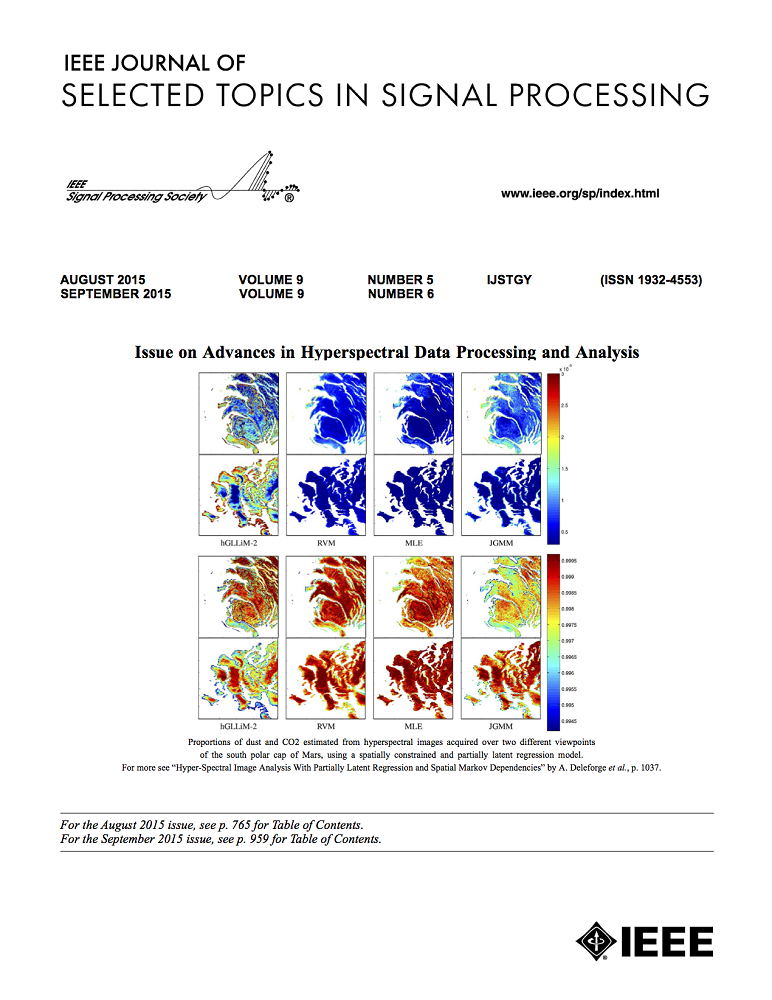基于稀疏阵列的近场多用户通信
IF 8.7
1区 工程技术
Q1 ENGINEERING, ELECTRICAL & ELECTRONIC
IEEE Journal of Selected Topics in Signal Processing
Pub Date : 2024-06-19
DOI:10.1109/JSTSP.2024.3416681
引用次数: 0
摘要
本文研究了基于稀疏阵列(SA)的近场多用户通信。首先,对于均匀阵列(USA),我们分析了信道转向矢量的波束增益,结果表明增加天线间距可以有效提高天线阵列的空间分辨率,从而提高多用户通信的总和速率。然后,我们研究了非均匀 SA(NSA),以减轻 USA 的光栅裂片对多用户的高干扰。为了最大限度地提高近场多用户通信的总和速率,我们优化了 NSA 的天线位置,并提出了一种基于连续凸近似的天线位置优化算法。此外,我们还发现美国和非国家行为者的信道在定义的代理距离-角度(SD-A)域中呈现出均匀的稀疏性。基于信道稀疏性,我们开发了一种网格上 SD-A 域正交匹配追求(SDA-OMP)算法来估计多用户信道。为了进一步提高 SDA-OMP 的分辨率,我们还设计了一种离网 SD-A 域迭代超分辨率信道估计算法。仿真结果证明了所提方法的优越性能。本文章由计算机程序翻译,如有差异,请以英文原文为准。
Near-Field Multiuser Communications Based on Sparse Arrays
This paper considers near-field multiuser communications based on sparse arrays (SAs). First, for the uniform SAs (USAs), we analyze the beam gains of channel steering vectors, which shows that increasing the antenna spacings can effectively improve the spatial resolution of the antenna arrays to enhance the sum rate of multiuser communications. Then, we investigate nonuniform SAs (NSAs) to mitigate the high multiuser interference from the grating lobes of the USAs. To maximize the sum rate of near-field multiuser communications, we optimize the antenna positions of the NSAs, where a successive convex approximation-based antenna position optimization algorithm is proposed. Moreover, we find that the channels of both the USAs and the NSAs show uniform sparsity in the defined surrogate distance-angle (SD-A) domain. Based on the channel sparsity, an on-grid SD-A-domain orthogonal matching pursuit (SDA-OMP) algorithm is developed to estimate multiuser channels. To further improve the resolution of the SDA-OMP, we also design an off-grid SD-A-domain iterative super-resolution channel estimation algorithm. Simulation results demonstrate the superior performance of the proposed methods.
求助全文
通过发布文献求助,成功后即可免费获取论文全文。
去求助
来源期刊

IEEE Journal of Selected Topics in Signal Processing
工程技术-工程:电子与电气
CiteScore
19.00
自引率
1.30%
发文量
135
审稿时长
3 months
期刊介绍:
The IEEE Journal of Selected Topics in Signal Processing (JSTSP) focuses on the Field of Interest of the IEEE Signal Processing Society, which encompasses the theory and application of various signal processing techniques. These techniques include filtering, coding, transmitting, estimating, detecting, analyzing, recognizing, synthesizing, recording, and reproducing signals using digital or analog devices. The term "signal" covers a wide range of data types, including audio, video, speech, image, communication, geophysical, sonar, radar, medical, musical, and others.
The journal format allows for in-depth exploration of signal processing topics, enabling the Society to cover both established and emerging areas. This includes interdisciplinary fields such as biomedical engineering and language processing, as well as areas not traditionally associated with engineering.
 求助内容:
求助内容: 应助结果提醒方式:
应助结果提醒方式:


